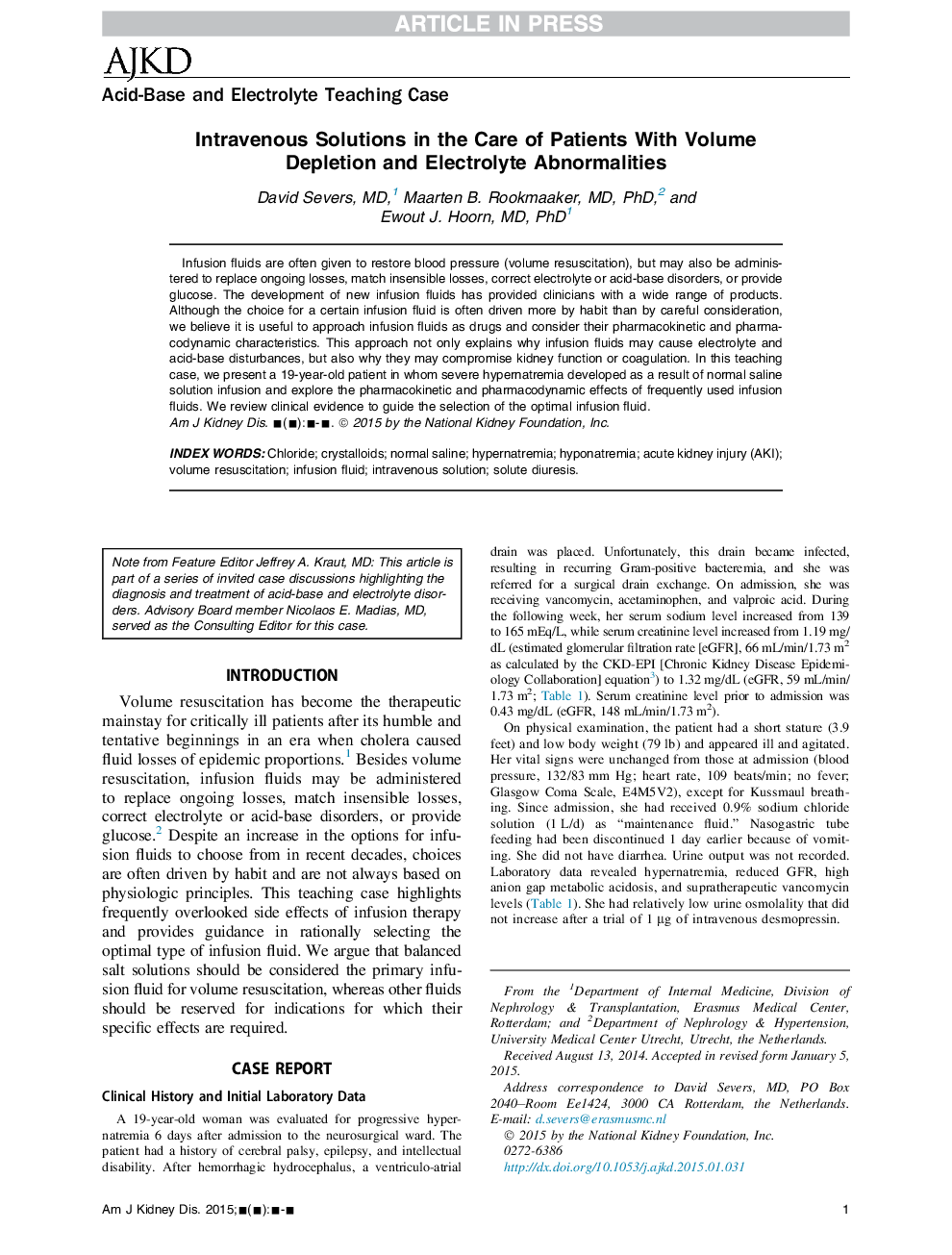| Article ID | Journal | Published Year | Pages | File Type |
|---|---|---|---|---|
| 6156901 | American Journal of Kidney Diseases | 2015 | 7 Pages |
Abstract
Infusion fluids are often given to restore blood pressure (volume resuscitation), but may also be administered to replace ongoing losses, match insensible losses, correct electrolyte or acid-base disorders, or provide glucose. The development of new infusion fluids has provided clinicians with a wide range of products. Although the choice for a certain infusion fluid is often driven more by habit than by careful consideration, we believe it is useful to approach infusion fluids as drugs and consider their pharmacokinetic and pharmacodynamic characteristics. This approach not only explains why infusion fluids may cause electrolyte and acid-base disturbances, but also why they may compromise kidney function or coagulation. In this teaching case, we present a 19-year-old patient in whom severe hypernatremia developed as a result of normal saline solution infusion and explore the pharmacokinetic and pharmacodynamic effects of frequently used infusion fluids. We review clinical evidence to guide the selection of the optimal infusion fluid.
Keywords
Related Topics
Health Sciences
Medicine and Dentistry
Nephrology
Authors
David MD, Maarten B. MD, PhD, Ewout J. MD, PhD,
